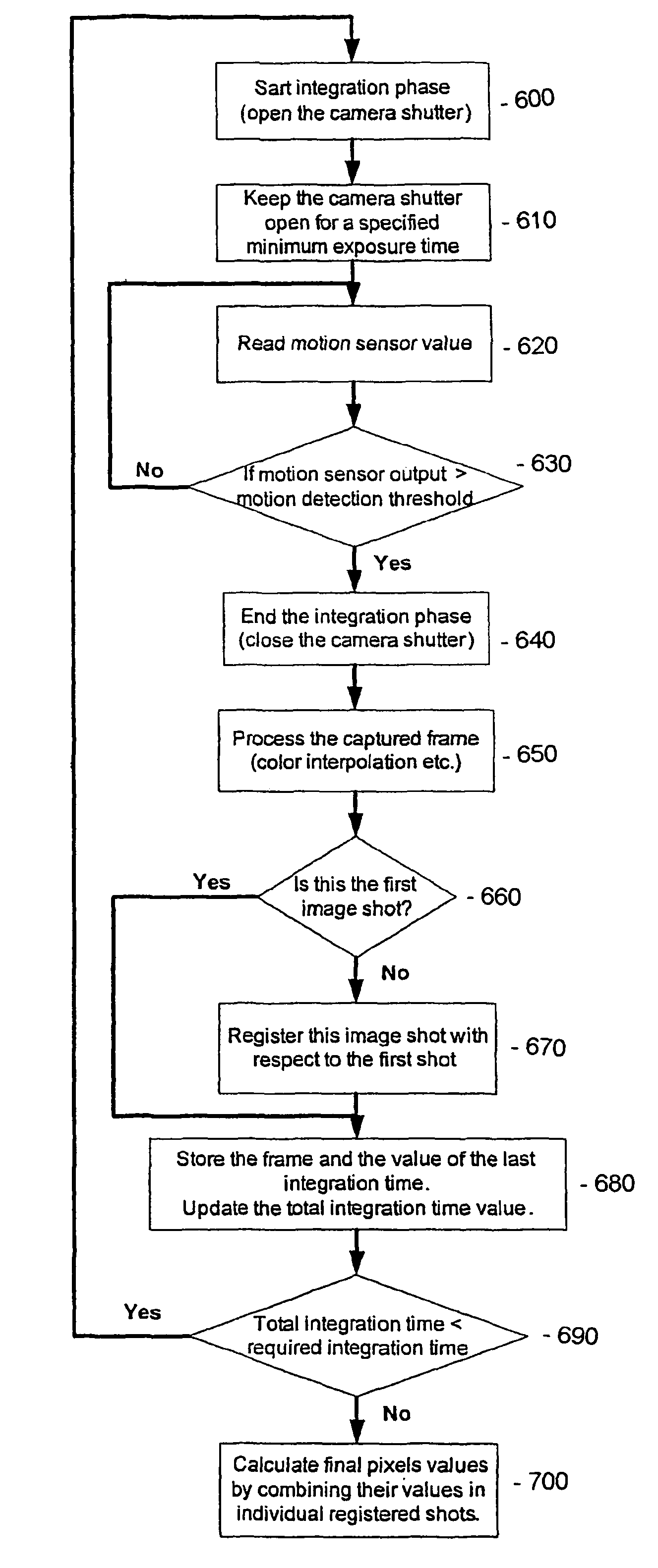System and method for implementation motion-driven multi-shot image stabilization
a multi-shot image and motion-driven technology, applied in the field of camera modules, can solve the problems of image stabilization, image stabilization, and degradation of the final image, and achieve the effects of reducing the computational cost of processing many image shots and the memory requirements
- Summary
- Abstract
- Description
- Claims
- Application Information
AI Technical Summary
Benefits of technology
Problems solved by technology
Method used
Image
Examples
Embodiment Construction
[0024]A generic camera module constructed according to the principles of the present invention is shown at 110 in FIG. 1. The camera module 110 can be a stand-alone device or can be incorporated into another electronic device, such as a portable telephone. The camera module 110 includes a housing 111 which contains at least one lens 112, a primary memory unit 114, a camera processor 116, and at least one image sensor 118. The primary memory unit 114 can be used to store digital images and computer software for performing various functions in the camera module 110, as well as to implement the present invention. A removable, secondary memory unit 120 in the form of a memory card can also be included in the digital camera to provide extra memory space. The image sensor 118 can be a charge coupled device (CCD), a complementary metal oxide semiconductor (CMOS), or another system. The camera module 110 also includes at least one motion sensor 130 operatively connected to the camera proces...
PUM
 Login to View More
Login to View More Abstract
Description
Claims
Application Information
 Login to View More
Login to View More - R&D
- Intellectual Property
- Life Sciences
- Materials
- Tech Scout
- Unparalleled Data Quality
- Higher Quality Content
- 60% Fewer Hallucinations
Browse by: Latest US Patents, China's latest patents, Technical Efficacy Thesaurus, Application Domain, Technology Topic, Popular Technical Reports.
© 2025 PatSnap. All rights reserved.Legal|Privacy policy|Modern Slavery Act Transparency Statement|Sitemap|About US| Contact US: help@patsnap.com



